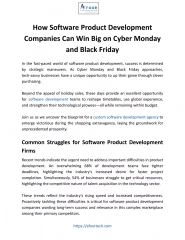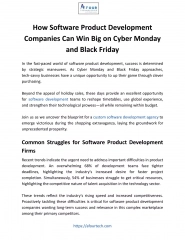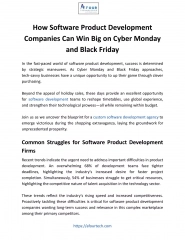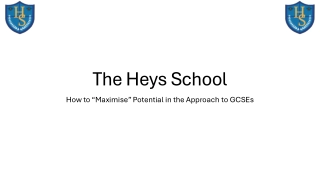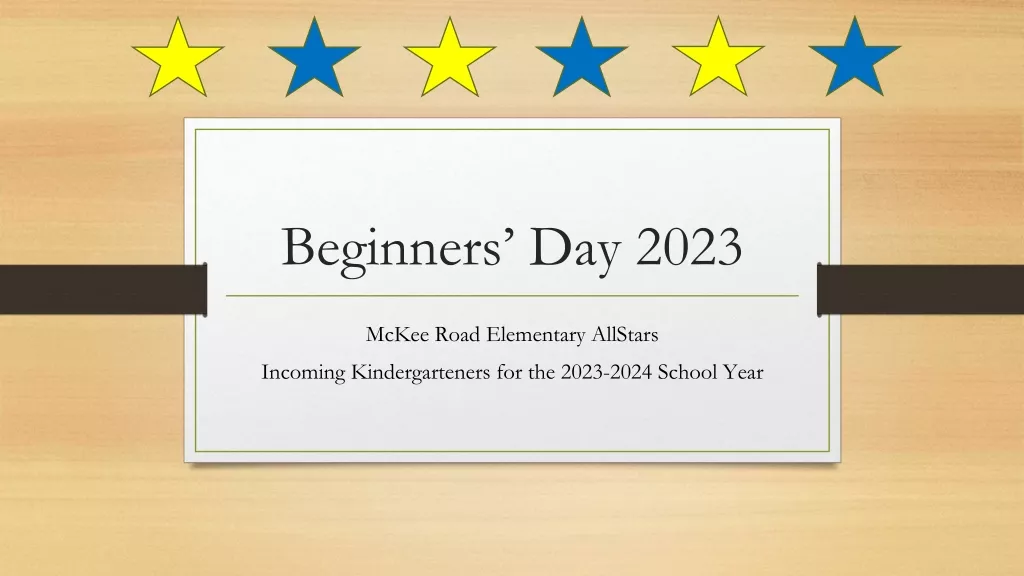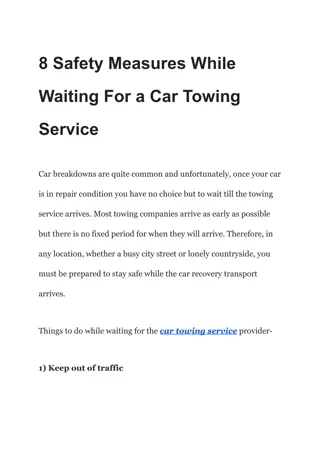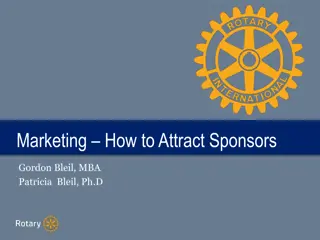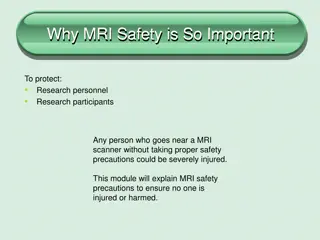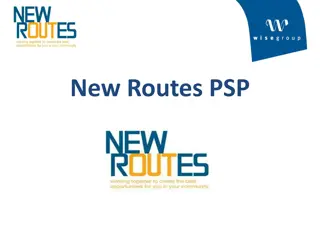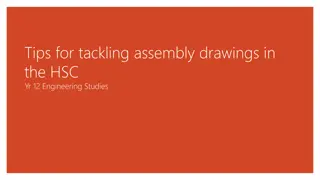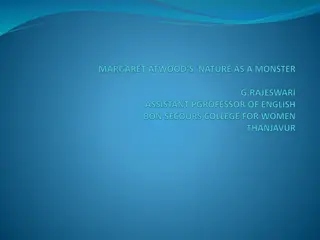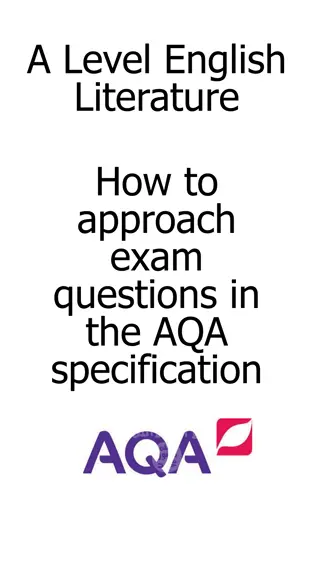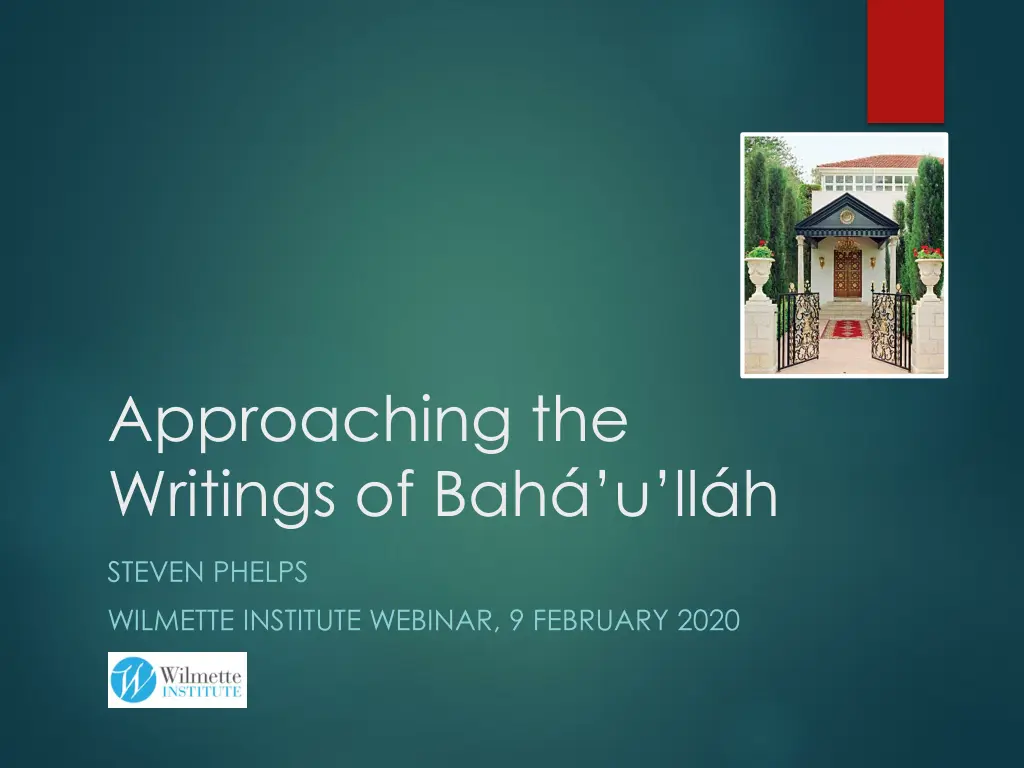
Unveiling the Depths of Bahá'u'lláh's Writings: A Scholarly Exploration
Delve into the profound ocean of Bahá'u'lláh's writings with Steven Phelps in this insightful webinar, addressing access challenges, content exploration, and creating study aids for advanced researchers. Discover resources, approaches, and guidance for navigating the vastness of Bahá'u'lláh's literary legacy.
Download Presentation

Please find below an Image/Link to download the presentation.
The content on the website is provided AS IS for your information and personal use only. It may not be sold, licensed, or shared on other websites without obtaining consent from the author. If you encounter any issues during the download, it is possible that the publisher has removed the file from their server.
You are allowed to download the files provided on this website for personal or commercial use, subject to the condition that they are used lawfully. All files are the property of their respective owners.
The content on the website is provided AS IS for your information and personal use only. It may not be sold, licensed, or shared on other websites without obtaining consent from the author.
E N D
Presentation Transcript
Approaching the Writings of Bah u ll h STEVEN PHELPS WILMETTE INSTITUTE WEBINAR, 9 FEBRUARY 2020
Last time: of 14 2 Background to this presentation: August 18, 2019 WI Webinar: The Writings of the B b http://wilmetteinstitute.org/overview-of-the-writings-of- the-bab/
This time: 3 The Writings of Bah u ll h: The Most Great Ocean Complete the trilogy of Central Figures: The Writings of Abdu l-Bah Address challenges: Access What is out there? Chart the coastline Content What does it say? Plumb the depths
Challenges on the path of approach: The Writings of Bah u ll h 4 Access Both original texts and translations are scattered, uncoordinated (beyond the BWC) Majority of original texts (~55-60%) in Arabic Majority of texts (>90%) are untranslated For those wanting an exhaustive and systematic study: where do they begin and where do they end? And where can I find them? Content Size: ~6 million words (vs. ~5 million for the B b) ~20,000 surviving works (vs. ~2,000 for the B b) Uncharted vastness discourages the approach
The goal 5 Create two aids for advanced study 1. Facilitating access: catalog the accessible sources Exhaustive list of what we presently have access to Both original texts and translations: focus is on original texts Spreadsheet method: see previous webinar Include all three Central Figures 2. Exploring content: thematic reconstructions Multiple approaches possible
Caveat lector 6 This is not an introduction : Familiarity with the Central Figures and their principal works is assumed First, get one s bearings I. Take the sequence of Ruhi courses II. Read the available published literature at bahai.org/library/ before heading into uncharted waters III. This resource:
Primary sources for the inventory 7 Existing lists of Bah u ll h s Writings, in English Shoghi Effendi s Best-Known Works list from the old Baha i World volumes. ~150 items Leiden List ~500 items total: 2.5% of the total. Last update >10 years ago. Core resources Bah Reference Library (https://www.bahai.org/library/) Iranian Bah National Archives (INBA) (>100 volumes, http://www.afnanlibrary.org/docs/persian-arabic-mss/inba/) British Library (>50 volumes) Misc. publications, scanned and digitized in Arabic/Persian/English. www.bahailib.com etc. Misc. publications still in paper form. internet-original content : Misc. web sites such as www.bahai-library.com, personal web sites
Results of the inventory 8 Availability: The B b: ~25% in public domain in original languages Bah u ll h: ~75% Abdu l-Bah : ~40% Reported utterances A few thousand more (mostly Abdu l-Bah )
Accessing the inventory (~50MB pdf) 9 http://blog.loomofreality.org/
Parsing catalog entries 10 http://blog.loomofreality.org/ ID Title Word Count Language First line (Ara/Per) Manuscripts (Ara/Per) Publications (Ara/Per) Translations (Eng only) First line in translation Notes Hyperlinks Intended as a scholarly tool: assumes acquaintance with original languages, source criticism.
Some use cases 11 Lookup from source reference (e.g., GWB#050 ) Refer to bibliography for source code abbreviations Lookup from words/phrases in first line Systematic readthrough Longest-to-shortest, shortest-to-longest Browse titles (from index) Browse questions (from index) Collation of original text from multiple manuscripts May be useful when authorized text at Bah Reference Library does not exist http://blog.loomofreality.org/
Next step: Content (appendix to the Inventory) 12 Kant s Critique of Pure Reason What can we know? What should we do? What may we hope?
A classification scheme 13 What can we know? What are the ultimate things to know about? How do we know them? How does language function as a vehicle for the transmission of knowledge? What should we do? As individuals, in relation to ourselves, others, the Truth? As groups of individuals that need to both cooperate and compete? What shall we hope? Where did we come from, and what kind of a world are we creating?
Classification: sub-categories 14 Links to thematic compilations of extracts Shoghi Effendi, Universal House of Justice heavily referenced here


